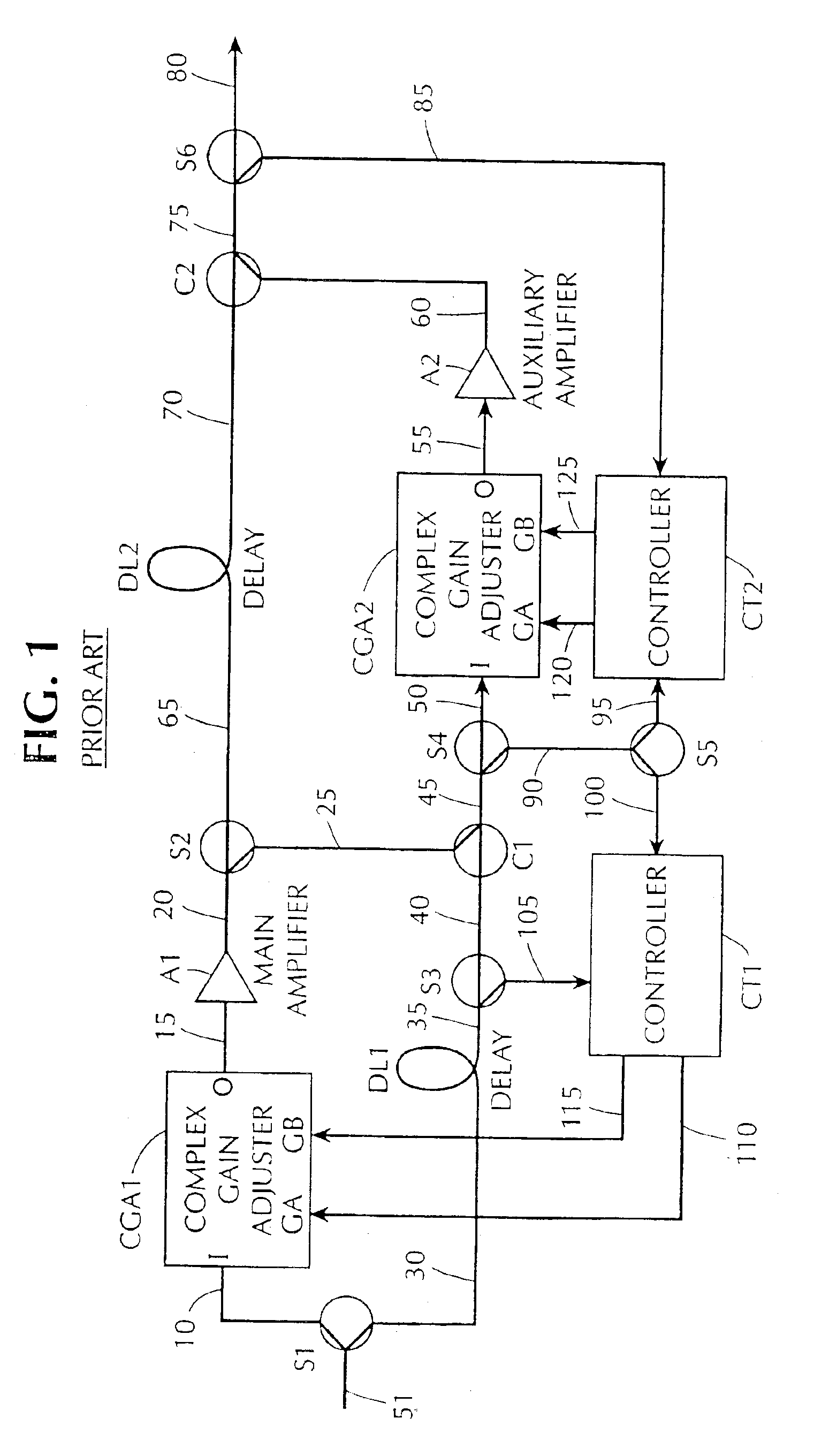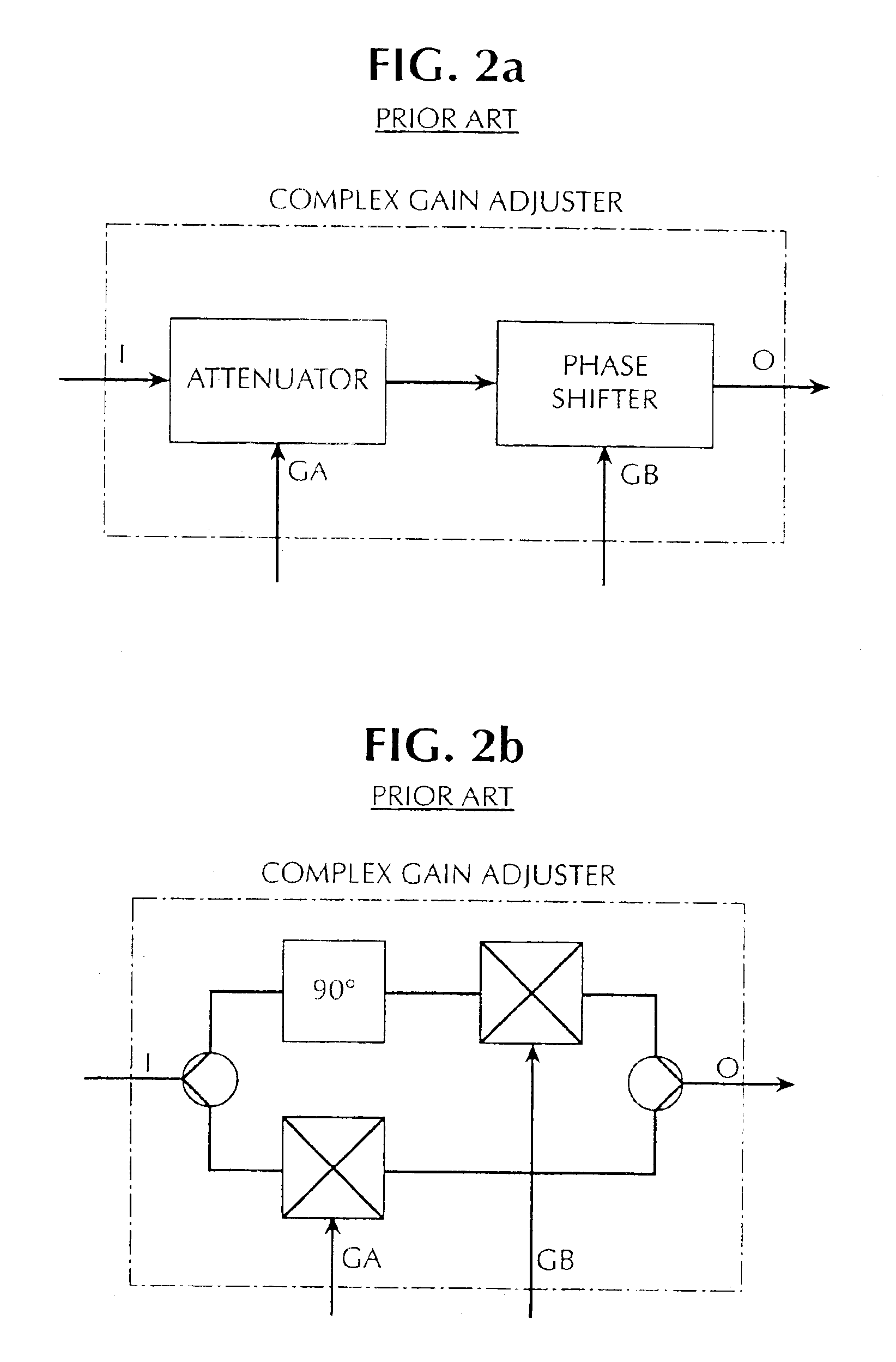Adaptive linearizer for RF power amplifiers
a technology of rf power amplifiers and linearizers, applied in amplifiers, amplifier types, amplifier modifications to reduce noise influence, etc., can solve problems such as error signals, error signals, and error signals
- Summary
- Abstract
- Description
- Claims
- Application Information
AI Technical Summary
Benefits of technology
Problems solved by technology
Method used
Image
Examples
Embodiment Construction
[0049]FIG. 12 shows an improved arrangement for the delay, gain and phase adjuster (DGPA) and the controller CT3 (CT4). This improved DGPA and controller set is used to replace the corresponding components in prior art feedforward amplifiers such as the feedforward amplifier of FIG. 4. Unlike the prior art amplifiers, which have two parallel adjustable branches in the DGPA, the feedforward amplifier in accordance with the present invention includes a larger number of branches.
[0050]In FIG. 12, the input signal 10 is split into three branches. The first branch includes a delay element 201 and a complex gain adjuster (CGA) 211. The second branch includes a delay element 202 and a CGA 212. The third branch includes a CGA 213, but does not include a delay element (although it will have an associated incidental delay inherent in the circuit components and interconnections, which can be ignored). Each of the CGAs 211-213 is independently controlled by a pair of signals GA and GB. These si...
PUM
 Login to View More
Login to View More Abstract
Description
Claims
Application Information
 Login to View More
Login to View More - R&D
- Intellectual Property
- Life Sciences
- Materials
- Tech Scout
- Unparalleled Data Quality
- Higher Quality Content
- 60% Fewer Hallucinations
Browse by: Latest US Patents, China's latest patents, Technical Efficacy Thesaurus, Application Domain, Technology Topic, Popular Technical Reports.
© 2025 PatSnap. All rights reserved.Legal|Privacy policy|Modern Slavery Act Transparency Statement|Sitemap|About US| Contact US: help@patsnap.com



